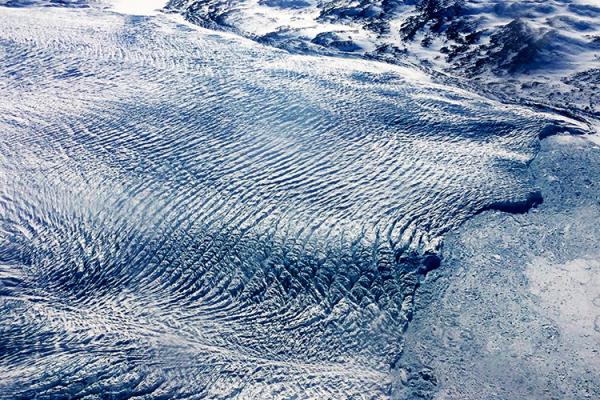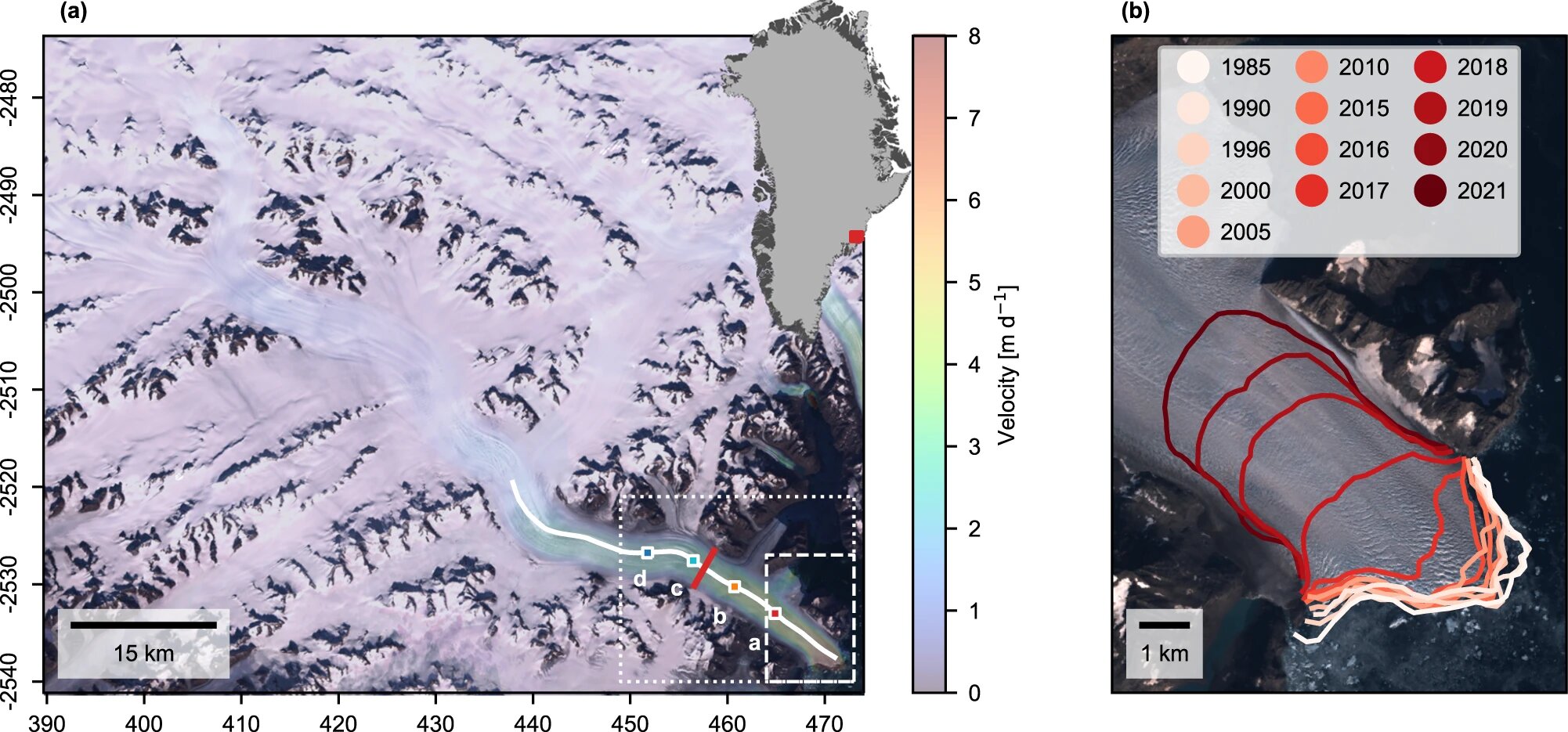A Once-Stable Glacier in Greenland Is Now Rapidly Disappearing Due to Warming Atlantic Waters

Greenland's Steenstrup Glacier, previously stable for decades, is now retreating at an unprecedented rate, according to a study published today in the journal Nature Communications. The rapid response of Steenstrup Glacier to ocean warming following long-term stability suggests that none of the outlet glaciers draining the Greenland ice sheet are safe.
The study's lead author was Thomas Chudley, who completed this work as a research associate at the Byrd Polar and Climate Research Center at The Ohio State University. Other authors included Ian Howat, ENGIE-Axium Professor, Distinguished University Scholar at the School of Earth Sciences and director of the Byrd Center; Michalea King at Polar Science Center, University of Washington and a former Byrd Center Ph.D. student and Adelade Negrete, a current Byrd Center research technician. Chudley is now a Leverhulme research fellow at Durham University in the United Kingdom.

Location of Steenstrup. a Location and speed of KIV Steenstrup Nordre Bræ. The color scale indicates the mean 2016 velocity from ITS_LIVE velocity pairs. Colored squares a–d indicate locations used to sample velocity time series in Fig. 2, the white line marks the centreline used to derive profiles in Fig. 3, and the red line marks the flux gate used for ice discharge calculation. The dotted box marks the extent of Fig. 4, and the dashed box marks the extent of panel (b). The background is a composite of median Sentinel-2 RGB pixel values from May to October 2016. Coordinates in unit kilometers of NSIDC Polar Stereographic North. Inset shows the location of Steenstrup within Greenland. b Changing front position of Steenstrup since 2016, identified using GEEDiT82. Credit: Nature Communications (2023). DOI: 10.1038/s41467-023-37764-7 (From Phys.org)
The Steenstrup glacier has retreated approximately 5 miles, thinned around 20%, and discharged twice as much ice into the ocean while quadrupling in velocity between 2018 and 2021. The researchers found that the intrusion of warming waters from the Atlantic into Greenlandic fjords, the critical oceanic gateways that can affect the stability of local glaciers, was responsible for the glacial retreat. The study suggests that warming waters makes previously stable glaciers susceptible to sudden and rapid retreat.
NASA supported this work.
Learn more about this research at Ohio State News and Phys.org or by downloading the PDF.
Watch an animation of KIV Steenstrup Nordre Bræ, Greenland retreat between 2017 and 2021 produced from Landsat-8 and -9 images courtesy of the U.S. Geological Survey.
Related material: watch Video: Measuring the Massive Melt from The Proceedings of the National Academy of Sciences (PNAS).
